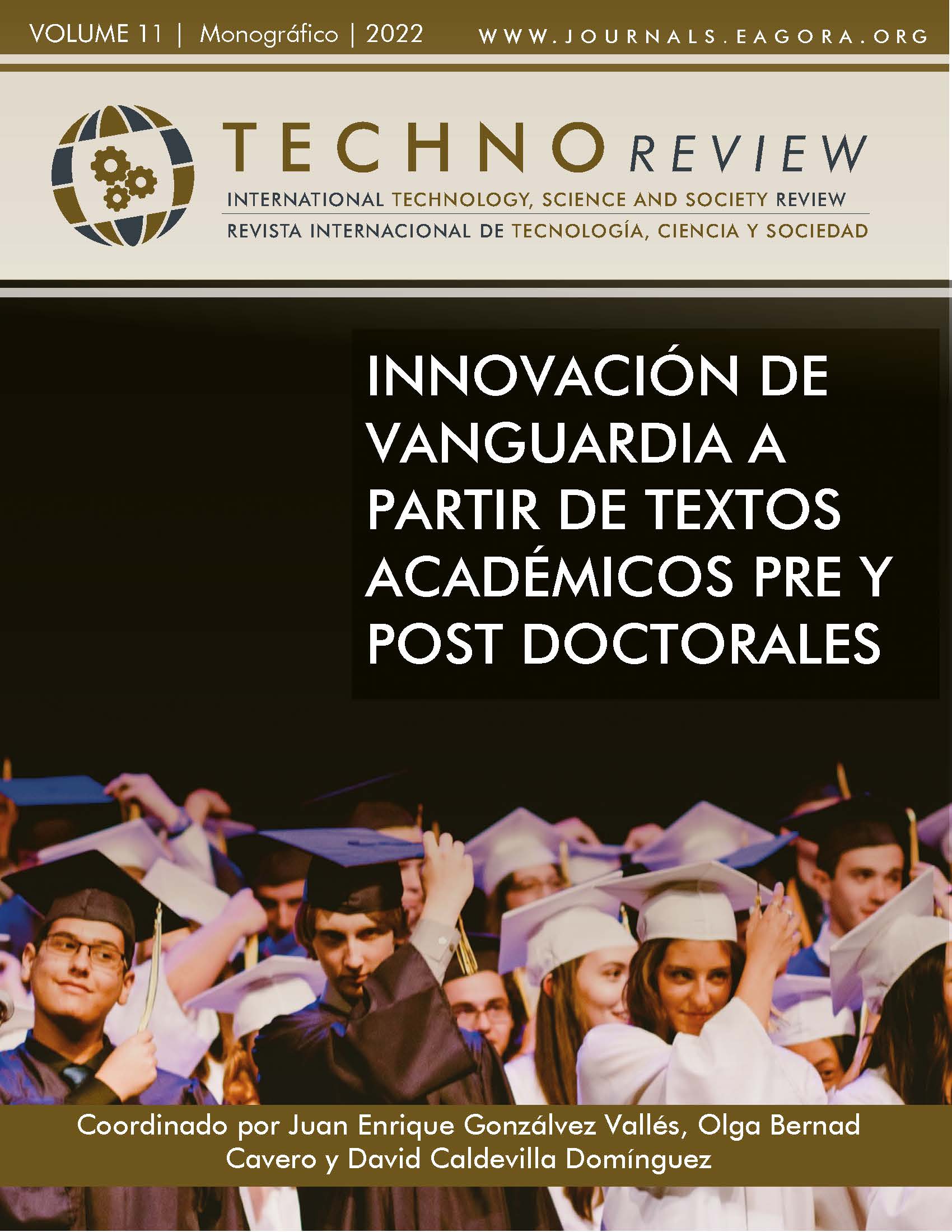The Triple Helix Model of Innovation
An Analysis of Scientific Production
DOI:
https://doi.org/10.37467/revtechno.v11.4453Keywords:
Triple Helix, Innovation, Knowledge economy, Science policy, BibliometricsAbstract
This paper analyzes the scientific production on the Triple Helix model, based on the interaction between university-industry-government, which highlights the relevance of the role of universities in the transition from an industrial society to another based on knowledge. Bibliometric indicators and factor analysis techniques were used. A total of 593 publications indexed in the central collection of Web of Science (WoS) were retrieved, from 1993 to 2022. The most productive authors, countries, institutions and journals, the manuscripts with the greatest impact and the thematic and conceptual structure in the scientific field analyzed.
References
Amable, B., Barré, R., & Boyer, R. (2008). Los sistemas de innovación en la era de la globalización. Ciepp - Miño y Dávila.
Aria M., Cuccurullo C. (2017). Bibliometrix: An R-tool for comprehensive science mapping analysis. Journal of Informetrics, 11(4),959-75. https://doi.org/10.1016/j.joi.2017.08.007
Bradford, S. C. (1985). Sources of information on specific subjects 1934. Journal of Information Science, 10(4), 176-80.
Carayannis, E. G. & Campbell, D. F. J. (2009). ‘Mode 3’ and ‘Quadruple Helix’: toward a 21st century fractal innovation ecosystem. International Journal of Technology Management, 46(3-4), 201-34. https://doi.org/10.1504/IJTM.2009.023374
Carayannis, E. G. & Campbell, D. F. J. (2010). Triple Helix, Quadruple Helix and Quintuple Helix and how do knowledge, innovation and the environment relate to each other? A proposed framework for a trans-disciplinary analysis of sustainable development and social ecology. International Journal of Social Ecology and Sustainable Development, 1(1), 41-69. https://www.igi-global.com/article/triple-helix-quadruple-helix-quintuple/41959
Carayannis, E. G. & Rakhmatullin, R. (2014). The Quadruple/Quintuple Innovation Helixes and Smart Specialisation Strategies for Sustainable and Inclusive Growth in Europe and Beyond. Journal of the Knowledge Economy, 5, 212-39. https://doi.org/10.1007/s13132-014-0185-8
Etzkowitz, H. & Leydesdorff, L. (1995). The Triple Helix—university–industry–government relations: a laboratory for knowledge based economic development. EASST Review, 14, 14-19.
Etzkowitz, H. & Leydesdorff, L. (1997). Universities and the Global Knowledge Economy: A Triple Helix of University-Industry-Government Relations. Pinter.
Etzkowitz, H. & Leydesdorff, L. (1998). The endless transition: A “Triple Helix” of university–industry–government relations, Introduction to a theme issue. Minerva, 36, 203-08.
Etzkowitz, H. (2003). Innovation in Innovation: The Triple Helix of University-Industry-Government Relations. Social Science Information, 42(3), 293-337. https://doi:10.1177/05390184030423002
Etzkowitz, H., & Leydesdorff, L. (2000). The dynamics of innovation: from National Systems and “Mode 2” to a Triple Helix of university–industry–government relations. Research Policy, 29(2), 109-23. https://doi.org/10.1016/S0048-7333(99)00055-4
Etzkowitz, H., de Mello, J. M. C. & Almeida, M. (2005). Towards “meta-innovation” in Brazil: The evolution of the incubator and the emergence of a triple hélix. Research Policy, 34(4), 411-24. https://doi.org/10.1016/j.respol.2005.01.011.
Etzkowitz, H., Webster, A., Gebhardt, C., Terra, B. R. C. (2000). The future of the university and the university of the future: evolution of ivory tower to entrepreneurial paradigm. Research Policy, 29(2), 313-30. https://doi.org/10.1016/S0048-7333(99)00069-4
Fernández, S. F. (2011). Análisis Factorial. https://docplayer.es/9019720-Santiago-de-la-fuente-fernandez-analisis-factorial.html
Hartigan, J. A., Wong, M. A. (1979). A K-means Clustering Algorithm. Journal of the Royal Statistical Society. Series C (Applied Statistics), 28(1), 100-8. https://doi.org/10.2307/2346830
Hirsch, J. E . (2005). An index to quantify an individual’s scientific research output. Proceedings of the National Academy of Sciences (PNAS) USA, 102(46), 16569-72. https://doi.org/ 10.1073/pnas.0507655102.
Leydesdorff, L. & Meyer, M. (2006). Triple Helix indicators of knowledge-based innovation systems: Introduction to the special issue. Research Policy, 35(10). https://doi.org/10.1016/j.respol.2006.09.016.
Leydesdorff, L. (2000). The triple helix: an evolutionary model of innovations. Research Policy, 29(2). https://doi.org/10.1016/S0048-7333(99)00063-3
Leydesdorff, L. (2012). The Triple Helix, Quadruple Helix, …, and an N-Tuple of Helices: Explanatory Models for Analyzing the Knowledge-Based Economy?. Journal of the Knowledge Economy, 3, 25-35. https://doi.org/10.1007/s13132-011-0049-4
Ranga, M. & Etzkowitz, H. (2013). Triple Helix Systems: An Analytical Framework for Innovation Policy and Practice in the Knowledge Society. Industry and Higher Education, 27(4), 237-62. https://doi.org/10.5367/ihe.2013.0165
Sábato, J. A. & Botana, N. (1968). La ciencia y la tecnología en el desarrollo futuro de América Latina. Revista de la integración, 1(3), 15-36.
Sábato, J. A. (1975). El pensamiento latinoamericano en la problemática ciencia-tecnología-desarrollo-dependencia. Paidós.
Sábato, J. A. & Mackenzie, M. (1982). La producción de tecnología. Autónoma o transnacional. Nueva Imagen.
Singer, P. (2009) Relaciones entre sociedad y estado en la economía solidaria. Íconos, 33, 51-65.
Van Raan AFJ. (2005). Measurement of Central Aspects of Scientific Research: Performance, Interdisciplinarity. Measurement, 3, 1-19. https://doi.org/10.1207/s15366359mea0301_1
Zhang, J., Yu, Q., Zheng, F., Long, Ch., Lu, Z., Duan, Z. (2016). Comparing keywords plus of WOS and autor keywords: a case study of patient adherence research. Journal of the Association for Information Science and Technology, 67, 967-72. https://doi.org/10.1002/asi.23437

